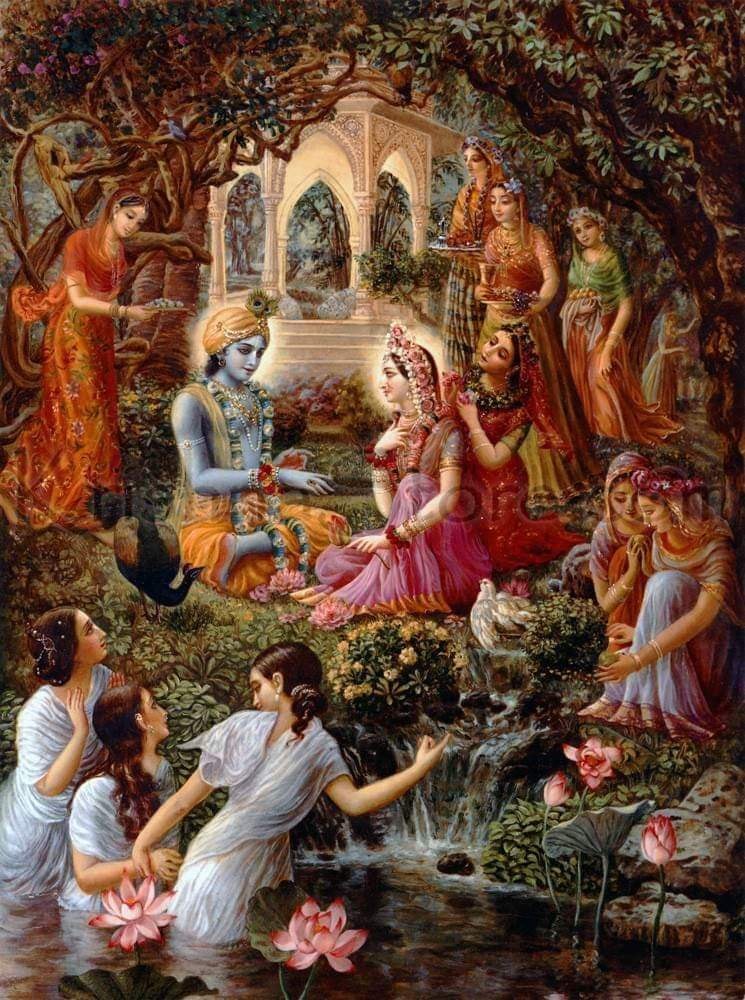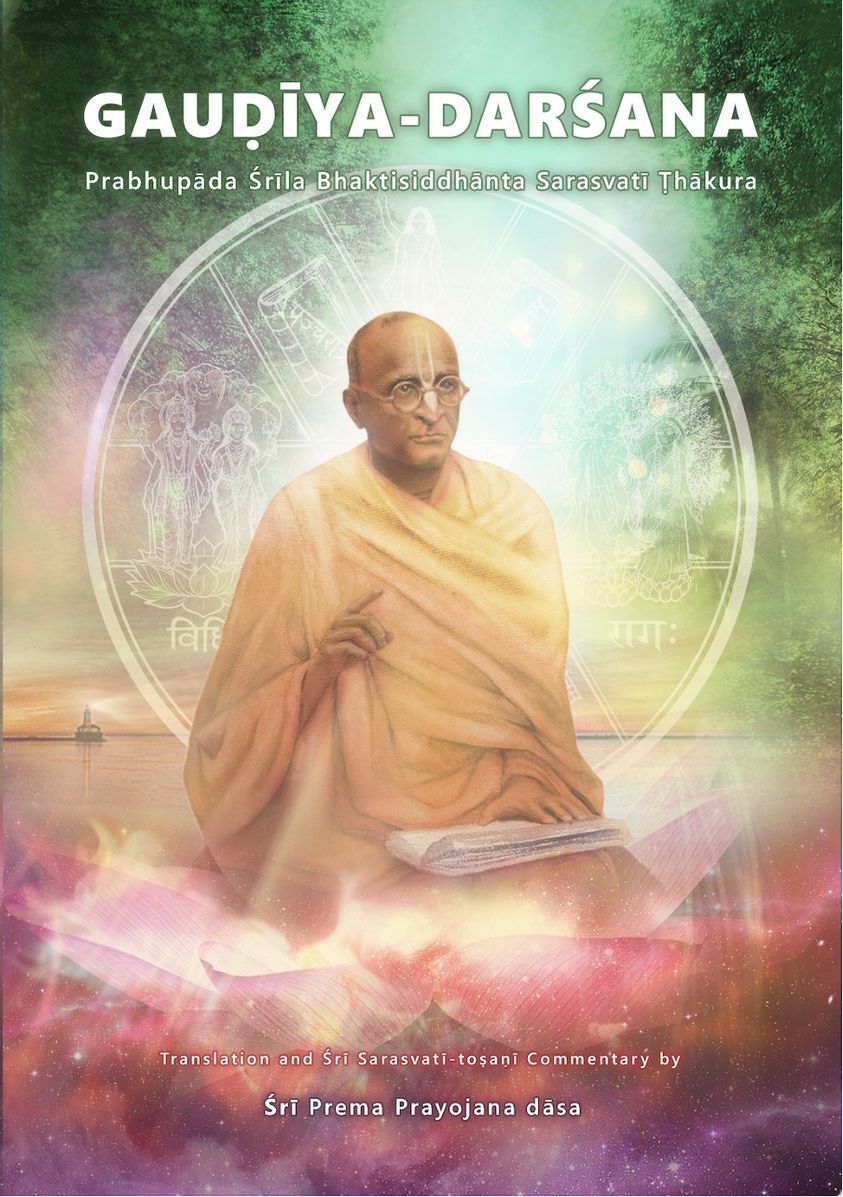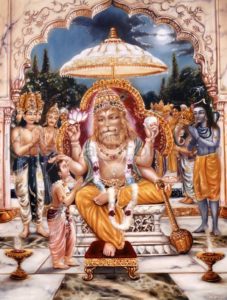
Lord Nrsimhadeva is an incarnation of Lord Krishna
For the occasion of Nrsimha Caturdasi, kindly read the following 2 synopses of lectures given by Srila Bhakti Vijnana Bharati Maharaja
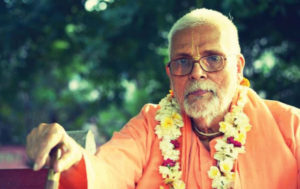
Srila Bhakti Vijnana Bharati Maharaja
. The first lecture (given on Nrsimha Caturdasi 3rd of May 2015) shows that in order to develop Bhakti, one needs the association of a pure devotee – and in order to get the association of a pure devotee, one needs sukriti. The second lecture (given on the 24th of May 2016) explains, how one gets that initial sukriti. Towards the end have been added, some complementary quotes by Srila A.C Bhaktivedanta Swami Prabhupada and Tridandiswami Srila Bhaktivedanta Narayana Maharaja.
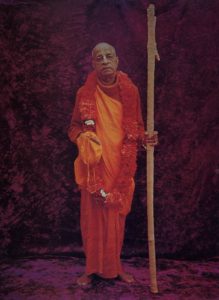
Srila A.C Bhaktivedanta Swami Prabhupada
Nrsimha Caturdasi 3rd of May 2015:
https://soundcloud.com/srila-
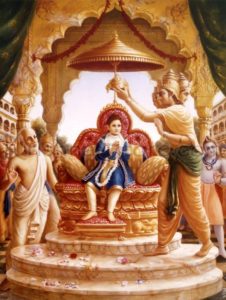
Sri Praladha Maharaja
Synopsis: There are so many instructions in the pastimes of Sri Prahlada Maharaja. They are in the 7th canto of Srimad Bhagavatam.
Prahlada was sent to the Gurukula, and his teachers were Sanda and Amarka. Hiranyakasipu told Prahlada to tell him the best thing he had learned. Prahlada Maharaja answered:
tat sadhu manye ‘sura-varya dehinam
sada samudvigna-dhiyam asad-grahat
hitvatma-patam grham andha-kupam
vanam gato yad dharim asrayeta
“O best of the asuras, King of the demons, as far as I have learned from my spiritual master, any person who has accepted a temporary body and temporary household life is certainly embarrassed by anxiety because of having fallen in a dark well where there is no water but only suffering. One should give up this position and go to the forest [vana]. More clearly, one should go to Vrndavana, where only Krsna consciousness is prevalent, and should thus take shelter of the Supreme Personality of Godhead.” (Srimad Bhagavatam –http://prabhupadabooks.com/
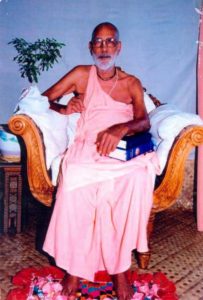
Srila Bhaktivedanta Narayana Maharaja
The second time Prahlada Maharaja was brought in front of Hiranyakasipu, Hiranyakasipu asked him: What have you learned from your Guru? At that time Prahlada Maharaja mentioned the 9 limbs of Bhakti (sravanam kirtanam –http://prabhupadabooks.com/
Then Hiranyakasipu became very angry. But Prahlada Maharaja was not afraid at all. Why? Srimad Bhagavatam mentions:
bhayam dvitiyabhinivesatah syad
isad apetasya viparyayo ’smrtih
tan-mayayato budha abhajet tam
bhaktyaikayesam guru-devatatma
“Fear arises when a living entity misidentifies himself as the material body because of absorption in the external, illusory energy of the Lord. When the living entity thus turns away from the Supreme Lord, he also forgets his own constitutional position as a servant of the Lord. This bewildering, fearful condition is effected by the potency for illusion, called māyā. Therefore, an intelligent person should engage unflinchingly in the unalloyed devotional service of the Lord, under the guidance of a bona fide spiritual master, whom he should accept as his worshipable deity and as his very life and soul.” (Srimad Bhagavatam 11.2.37)
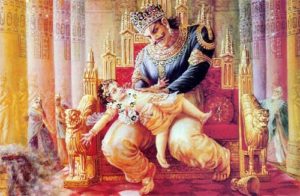
King Of The Demons Hiranyakashipu
A person who is having dvitiya abhinivesa, his mind is somewhere else except the lotus feet of the Lord, then and only then he becomes fearful. Otherwise it is not possible. Those who accept Guru as their dear, much more than their own soul, they serve Sri Guru and hear the words of Sri Guru, they are never fearful at all.
Prahlada Maharaja then mentions:
naisam matis tavad urukramanghrim
sprsaty anarthapagamo yad-arthah
mahiyasam pada-rajo-‘bhisekam
niskincananam na vrnita yavat
“Unless they smear upon their bodies the dust of the lotus feet of a Vaisnava COMPLETELY FREED FROM MATERIAL CONTAMINATION, persons very much inclined toward materialistic life cannot be attached to the lotus feet of the Lord, who is glorified for His uncommon activities. Only by becoming Krsna conscious and taking shelter at the lotus feet of the Lord in this way can one be freed from material contamination.” (Srimad Bhagavatam 7.5.32)
Unless and until one really meets with devotees and hears Hari Katha, it does not matter whatever devotional activity he may have performed, that will fall in the category of karma. This is one of the reasons nitya-lila-pravista om visnupad Srila Bhaktisiddhanta Sarasvati Goswami Thakura constructed so many temples. Unless and until one smears one´s body with the dust of the devotees, it is not possible that one´s consciousness can become like the devotees.
bhaktis tu bhagavad-bhakta-sangena parijayate
sat-sangah prapyate pumbhih sukrtaih purva-sancitaih
“Bhakti is awakened when one associates with bhaktas of Sri Bhagavan. Association with SUDDHA-bhaktas is attained only by the accumulation of transcendental pious activities performed over many lifetimes.” (Brhan-Naradiya-Purana 4.33)
How will we get sat sanga, association of devotees? When our sukrti becomes accumulated and it becomes condensed, then we get sat sanga. It is not so easy to get sat sanga. Only when there is enough sukrti, then we can get sat sanga. Without the mercy of the devotees of the Lord, we can not get Bhakti. Once we understand these things, automatically we will understand everything else. Today is a very auspicious occasion. So we should pray at the lotus feet of Bhagavan and His devotees.
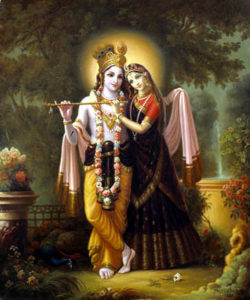
Bhagavan Sri Sri Radha and Krishna
Delhi 2016 May 24: How to get Bhakti (Hindi)
https://soundcloud.com/srila-
Synopsis: If someone has the desire to get Bhakti, then how to attain it?
bhaktis tu bhagavad-bhakta-sangena parijayate
sat-sangah prapyate pumbhih sukrtaih purva-sancitaih
“Bhakti is awakened when one associates with bhaktas of Sri Bhagavan. Association with suddha-bhaktas is attained only by the accumulation of transcendental pious activities performed over many lifetimes.” (Brhan-Naradiya-Purana 4.33)
Bhakti can only be achieved by associating with pure devotees of the Lord (bhagavad-bhakta). So how to get this association? “Sat-sangah prapyate pumbhih sukrtaih purva-sancitaih”. The soul will only get the association of saintly personalities, if the soul has some sukriti (sukrtaih).
After Nrsimhadeva had delivered Hiranyakashipu, Prahlada Maharaja asked Nrsimhadeva the following question: “In our house no devotees were allowed to come. I never had the association of pure devotees. Then how can it be that I have Bhakti for You, and that I got the association of Your devotee? I have this doubt. Kindly remove this doubt by Your mercy.”
Nrsimhadeva answered: “In your previous life, you were born in a brahman family, and your name was Vasu Sharma. But because of bad association, you became attached to a woman of low character, and fell down from your pious position. On the day of Nrsimha Caturdasi, you had a quarrel with that woman. You went into the forest, where you didn´t eat anything the entire day and night, and did not sleep at all. Because of the result of this activity (the sukriti achieved by observing Nrsimha Caturdasi unknowingly), you have achieved Bhakti unto My lotus feet. You don’t know this, but I am Trikala-darshi (the Knower of past, present and future), and I remain Nitya-kala (eternal).”
Whatever loving devotional service one does for the Lord, it always remains with one. Hari Bhakti is never destroyed. If someone does even some very little service for Bhagavan, He considers it to be very much, and then that remains eternally. Bhagavan is eternal, and that is why our relationship with Bhagavan is eternal (nitya). Whereas our relationship with this material world is a-nitya, not eternal.
Complementary quotes, explaining how it is possible to even unknowingly (ajnata) accumulate sukriti, which will eventually lead to association with pure devotees:
Srila A.C Bhaktivedanta Swami Prabhupada:
“The theory of chance can best be explained in the Vedic literature by the words ajnata-sukrti, which refer to pious activities performed without the actor’s knowledge. But these are also planned. For example, Krsna comes like an ordinary human being, He comes as a devotee like Lord Caitanya, or He sends His representative, the spiritual master, or pure devotee. This is also the planned activity of the Supreme Personality of Godhead.” (https://prabhupadabooks.com/
“When something uncommon happens in one’s progressive spiritual life, it should be understood to be incurred by ajnata-sukriti, or pious activities beyond one’s knowledge. To see personally the Supreme Personality of Godhead or His pure devotee is not an ordinary incident. When such things happen, they should be understood to be caused by previous pious activity” (https://prabhupadabooks.com/
“The Supreme Personality of Godhead is kind to the conditioned soul. Although this man (Ajamila) completely forgot Narayana, he was calling his child, saying, “Narayana, please come eat this food. Narayana, please come drink this milk.” Somehow or other, therefore, he was attached to the name Narayana. This is called ajnata-sukrti. Although calling for his son, he was unknowingly (ajnata) chanting the name of Narayana, and the holy name of the Supreme Personality of Godhead is so transcendentally powerful that his chanting was being counted and recorded.” (https://prabhupadabooks.com/
“To please himself, King Satyavrata, not knowing that the fish was the Supreme Personality of Godhead, decided with great pleasure to give the fish protection. Here is an example of giving service to the Supreme Personality of Godhead even without knowledge. Such service is called ajnata-sukrti. King Satyavrata wanted to show his own mercy, not knowing that the fish was Lord Visnu. By such unknowing devotional service, one is favored by the Supreme Personality of Godhead. Service rendered to the Supreme Lord, knowingly or unknowingly, never goes in vain.” (SB 8.24.16)
“They do not understand. But if they come here and simply hear. The children, they are also chanting Hare Krsna, they are offering obeisances, they are offering a lamp, they are playing some instrument, all these things will never go in vain. It is being accounted. This is called ajnata-sukrti. … You know or do not know, when you offer obeisances to the Supreme Personality of Godhead, it is immediately taken to your credit.” (Bombay, October 25, 1973)
“Ajnata-sukrti. This temple means to give chance to the people in general, ajnata-sukrti. Anyone who will come to this temple where the Deity is there, and even by imitating others, if one offers obeisances to the Lord, that is taken into account.” (Mayapura 23rd of February 1976)
“One must be very much fortunate to come in contact with Kṛṣṇa and guru. So how that fortunate becomes possible? It is called ajnata-sukrti. Sukrti and duskrti, these two words are used in Bhagavad-gita. Na māṁ duṣkṛtino mūḍhāḥ prapadyante narādhamāḥ (BG 7.15). There is the word, duṣkṛti. And sukṛti. Catur-vidhā bhajanti māṁ sukṛti ‘rjuna. So this sukrti, this fortune, there is a chance which is called ajnata-sukrti.” (Vrindavana 29th of October 1972)
Tridandiswami Srila Bhaktivedanta Narayana Maharaja:
“In the scriptures pious activity is called sukrti, which is of two kinds: That which promotes bhakti, and that which instigates some secondary result other than bhakti. Sukrti that begets ordinary fruits arises from such activities as service to one’s parents or husband, material welfare work, charity, execution of nitya-naimittika-karma (one’s daily and occasional duties), cultivation of sankhya and other types of jnana, and so on.
Sukrti that gives rise to transcendental (paramarthika) results, or in other words bhakti, arises from contact with places such as a temple or holy place, holy times or days, or objects related to bhakti or sadhu-sanga. When heaps and heaps of sukrti that yields bhakti accumulate over countless lifetimes, bhakti makes its appearance through the via-medium of sadhu-sanga.
Laukika or material sukrti, after producing its desired fruits, is exhausted. The fruits of laukika-sukrti extend no further than the limit of material enjoyment. Sukrti that is rooted in brahma-jnana produces its fruit in the form of mukti and is then dissipated. These two types of sukrti are thoroughly incompetent to produce the fruit of bhakti.
Sukrti that yields bhakti arises from association with Vaisnavas; observance of Ekadasi, Janmastami, Gaura-purnima and other occasions which produce a saintly attitude; seeing or touching Tulasi, the temple, Sri Vrndavana and other holy places connected to the Lord, or a holy river like the Ganga or Yamuna; honouring maha-prasada; and other such activities. When these activities are performed unknowingly it is called sukrti. When, however, these activities are performed in the association of devotees and in full knowledge of their greatness, they become limbs of bhakti.”
(Bhakti Rasamrta Sindhu Bindu, Verse 3: Stages leading to the appearance of prema – http://www.purebhakti.com/
Hare Krishna
Please support this website and our services, like holding free meditation programs, or for book distribution, as this knowledge will and has helped tens of 1000s of people all over the world, to attain peace, give up nasty bad habits, violence, anger, anxiety, and become content and peaceful inside. This includes becoming free from drugs and intoxication.
Thank you.
PayPal.Me/harekrishnasociety
We help where it really counts, directly at the soul level.

 Posted in
Posted in 




